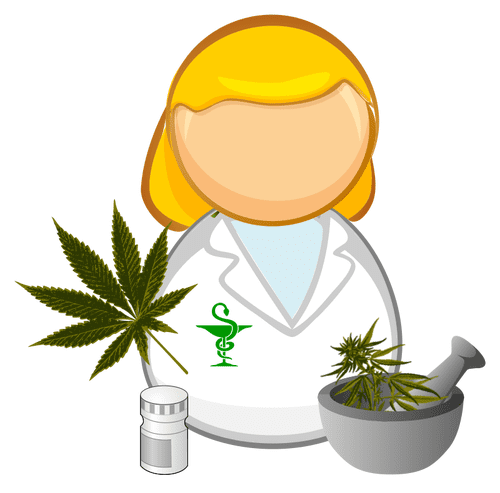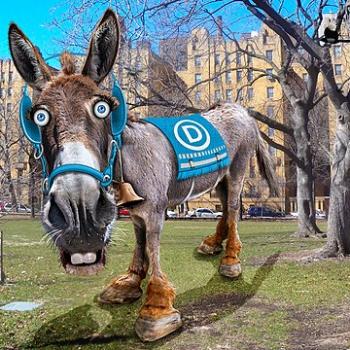
Introduction: the present state of legal marijuana in the USA and the world
As of July, 2018 there are 31 states in the USA plus the District of Columbia, Guam, and Puerto Rico that have legal marijuana (cannabis sativa) at least for medical reasons. [1] Nine of these states plus the District of Columbia also permit recreational marijuana. [2] Another fifteen states allow for limited use of products derived from cannabis or synthetic versions of these derivatives. [3] Only four states completely prohibit marijuana or its derivatives. Laws regarding marijuana worldwide vary widely. In Uruguay and Canada marijuana is now fully legal. [4] Other countries, such as Malaysia and Saudi Arabia, have stringent laws against the sale, distribution,or possession of the drug. [5] Some countries, such as Costa Rica, legally permit small amounts of marijuana. [6] Other countries, such as the Netherlands, generally tolerate recreational marijuana even though it is technically illegal. [7] Still other countries,such as Israel and Italy, permit marijuana for medical reasons but not for recreational use. [8]
Catholic principles
The Catechism of the Catholic Church teaches that “the use of drugs inflicts very grave damage on human life and health. Their use, except on strictly therapeutic grounds, is a grave offense.” [9] Marijuana is a drug that can inflict harm on the body, which is a “temple of the Holy Spirit” (1 Cor 6:19). Some people argue that marijuana is a harmless drug, but this is not true. The World Health Organization notes that cannabis contains a “major psychoactive constituent” known as “tetrahydrocannabinol (THC)” which impairs “cognitive development,” “psychomotor performance,” and can “exacerbate schizophrenia in affected individuals.” [10] The National Institute on Drug Abuse and the National Institutes of Health have substantiated numerous bad effects of marijuana use including “the risk of addiction, the symptoms of chronic bronchitis, and fatal and non-fatal motor vehicle accidents.” [11]
After Colorado legalized recreational marijuana in 2014, numerous negative effects have been documented: traffic deaths related to marijuana have increased 66%; there “has been an increase in youths going to rehab for addiction to marijuana … an increase in workplace incidence related to marijuana … a decrease in productivity, and … an increase in robberies.” [12] In their June 25, 2018 statement on recreational marijuana, the Canadian Conference of Catholic Bishops cite the findings of the Canadian Medical Association, the Canadian Psychiatric Association, and the Canadian Paediatric Society showing that “the use of cannabis is linked to addictions, depression, anxiety, psychosis, damage to brain development, and lung problems such as asthma and emphysema.” [13] The Canadian bishops also mention other health risks associated with marijuana including “the heightened risk of heart attack, stroke, all of the respiratory and carcinogenic pathologies associated with tobacco smoke, and a multitude of psychiatric disorders, including schizophrenia.” [14] Moreover, “studies have pointed to marijuana as a ‘gateway drug,’ underscoring the propensity of users to consume it in combination with other licit and illicit drugs, including some which may be ‘harder’.” [15]
Dangers in the legalization of marijuana for medical use
The Catechism of the Catholic Church teaches that the use of drugs, except on strictly therapeutic grounds, is a grave offense (emphasis added). [16] In light of this, some Catholics believe that marijuana may be justified for therapeutic reasons—though not for recreational use. [17] Although the use of therapeutic drugs and painkillers is permitted by the Church, [18] it’s important to evaluate the potential benefits of marijuana by medical evidence and to consider the potential dangers of the drug. The benefits of medical marijuana have not been sufficiently substantiated by medical science.There are more than 60 compounds known as cannabinoids in marijuana, and two in particular—tetrahydrocannabinol (THC) and cannabidiol (CBD)—have been studied for medical uses. [19] According to an October 2017 statement of the World Medical Association (WMA), “evidence supporting use of cannabis for medicinal purposes is of low to moderate quality, and inconsistent.” [20] According to the WMA, “more rigorous research is necessary before governments decide whether or not to legalize medical cannabis for medical purposes” because of “the low-quality scientific evidence on the health effects and therapeutic effectiveness of cannabis.” [21]
If the medical evidence for the therapeutic benefits of marijuana is “low-quality” and “inconsistent,” why is there such an effort to make it legal? According to Dr. Ed Gogek, M.D. there are powerful pro-marijuana lobbies behind efforts to legalize medical marijuana:
The idea that smoking pot is medicine didn’t come from doctors or groups representing the seriously ill. Neither the American Cancer Society nor the National Multiple Sclerosis Society supports it, and the American Medical Association and American Academy of Pediatrics strongly oppose it.
The idea to call marijuana medicine came from the National Organization for the Reform of Marijuana Laws and the Marijuana Policy Project. These two organizations are part of a national marijuana lobby that represents drug users, growers and sellers. They’re behind every medical-marijuana law in the country.
They advertise these laws with an impassioned plea to allow suffering, terminally ill people access to medicine. However, once these laws pass, most medical-marijuana patients claim pain, not serious illness. In Arizona, 90 percent get their marijuana for pain. In Colorado and Oregon, it’s 94 percent. Pain is every drug addict’s favorite complaint; it’s easy to fake and impossible to disprove. [22]
Father Tadeusz Pacholczyk, Ph.D. of the National Catholic Bioethics Center agrees with Dr. Gogek, and he notes that Yale University researchers have “raised concerns around the fact that medical marijuana seems to be receiving ‘special status’ and is being ‘fast-tracked’ for legalization, when it should instead be subject to the standard scientific verifications of the FDA approval process to assure its efficacy and safety.” [23] According to Catholic teaching, “life and physical health are precious gifts entrusted to us by God.” [24] We should not, therefore, support laws legalizing marijuana when there is not clear scientific proof that they have any benefits. But even if there were evidence of potential benefits of medicinal marijuana, we need to take into account the potential harms. According to Father Pacholczyk “tobacco and marijuana have other similarities. Marijuana smoke contains harmful chemicals, with ammonia, benzene, toluene, and naphthalene levels in marijuana exceeding those found in tobacco smoke. These chemical components may contribute to emphysema, bronchial irritation and inflammation. [25]
Because of the documented harms of smoking marijuana, those with chronic pain should make use of alternative forms of pain medication that have been medically tested and approved. In this regard, it’s important to note that Marinol (or the generic dronabinol) is a FDA approved “synthetic (chemical) form of THC,” which is the natural component of marijuana. [26] Since this synthetic form of the active medicinal ingredient of marijuana is already FDA approved, why should there be the push for medical marijuana? I think the answer is found in what Dr. Gogek has noted: laws allowing medical marijuana are a part of a larger movement to legalize marijuana entirely. The synthetic forms of the THC, although they do have some medical risks, do not have the dangers of smoked marijuana. They allow patients to avoid the “toxic chemicals” contained in smoked marijuana “by using more purified preparations containing only active ingredients.” [27] The marijuana lobby, however, is not satisfied with having pain medicines derived from cannabis compounds because they want marijuana made legal for even non-medicinal purposes. One reason for this push for legal marijuana is because it has the potential of turning into a multi-billion dollar industry. [28]
Once marijuana becomes legally available for medical purposes, it becomes very difficult to control. Those who feign medical needs to obtain the drug will be able to share it with family and friends. Children will be exposed to marijuana use, and the pro-marijuana lobby will keep pushing to have recreational marijuana either legalized or decriminalized.
Conclusion
The Catholic Church is all in favor of medication for those suffering chronic pain. This should stimulate research into forms of pain medication that do not have the health dangers and social risks of medical marijuana. Catholic leaders should not be tricked into believing the propaganda of the marijuana lobbies. There are alternatives to medical marijuana for controlling pain, and these alternatives should be utilized and pursued.
Footnotes
1 http://www.ncsl.org/research/health/state-medical-marijuana-laws.aspx
2 Ibid.
3 Ibid.
4 https://www.cnn.com/2018/06/20/health/canada-legalizes-marijuana/index.html
5 https://www.marijuanabreak.com/how-america-compares-to-other-countries-in-terms-of-cannabis-legality
6 https://www.marijuana.com/news/2017/11/where-in-the-world-is-marijuana-legal/
7 https://www.marijuanabreak.com/how-america-compares-to-other-countries-in-terms-of-cannabis-legality
8 Ibid.
9 Catechism of the Catholic Church [CCC], 2291.
10 http://www.who.int/substance_abuse/facts/cannabis/en/
11 https://www.ncbcenter.org/files/6814/6902/7169/MSOB108_Clearing_the_Air_Around_Marijuana_Use.pdf
12 http://www.ncregister.com/daily-news/rocky-mountain-low-the-downside-of-legalized-marijuana
13 http://www.cccb.ca/site/images/stories/pdf/CCCB_statement_on_Cannabis_-_EN.pdf
14 Ibid.
15 Ibid.
16 CCC, 2291.
18 See CCC, 2291 and 2229.
19 https://www.goodrx.com/blog/marinol-vs-marijuana-whats-the-difference/
20 https://www.wma.net/policies-post/wma-statement-on-medical-cannabis/
21 Ibid.
23 https://www.ncbcenter.org/files/2915/3192/5398/MSOB156_The_Smoke_over_Medical_Marijuana.pdf
24 CCC, 2288.
25 https://www.ncbcenter.org/files/2915/3192/5398/MSOB156_The_Smoke_over_Medical_Marijuana.pdf
26 https://www.goodrx.com/blog/marinol-vs-marijuana-whats-the-difference/
27 https://www.ncbcenter.org/files/2915/3192/5398/MSOB156_The_Smoke_over_Medical_Marijuana.pdf
***
Related Reading
Marijuana & Ill Health: Scientific / Medical Evidence [3-2-20]
***
Photo credit: [PublicDomainVectors]
***

















